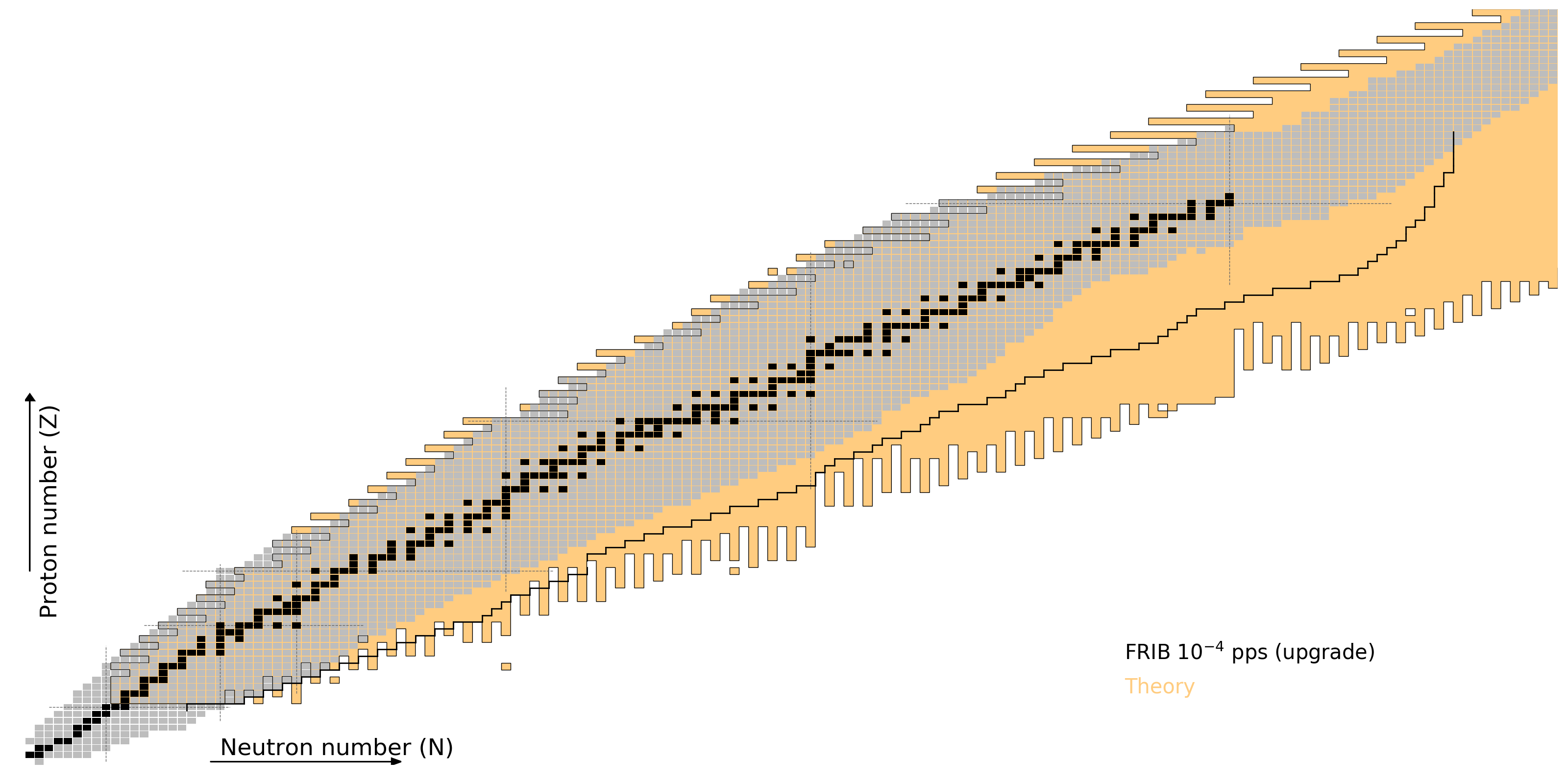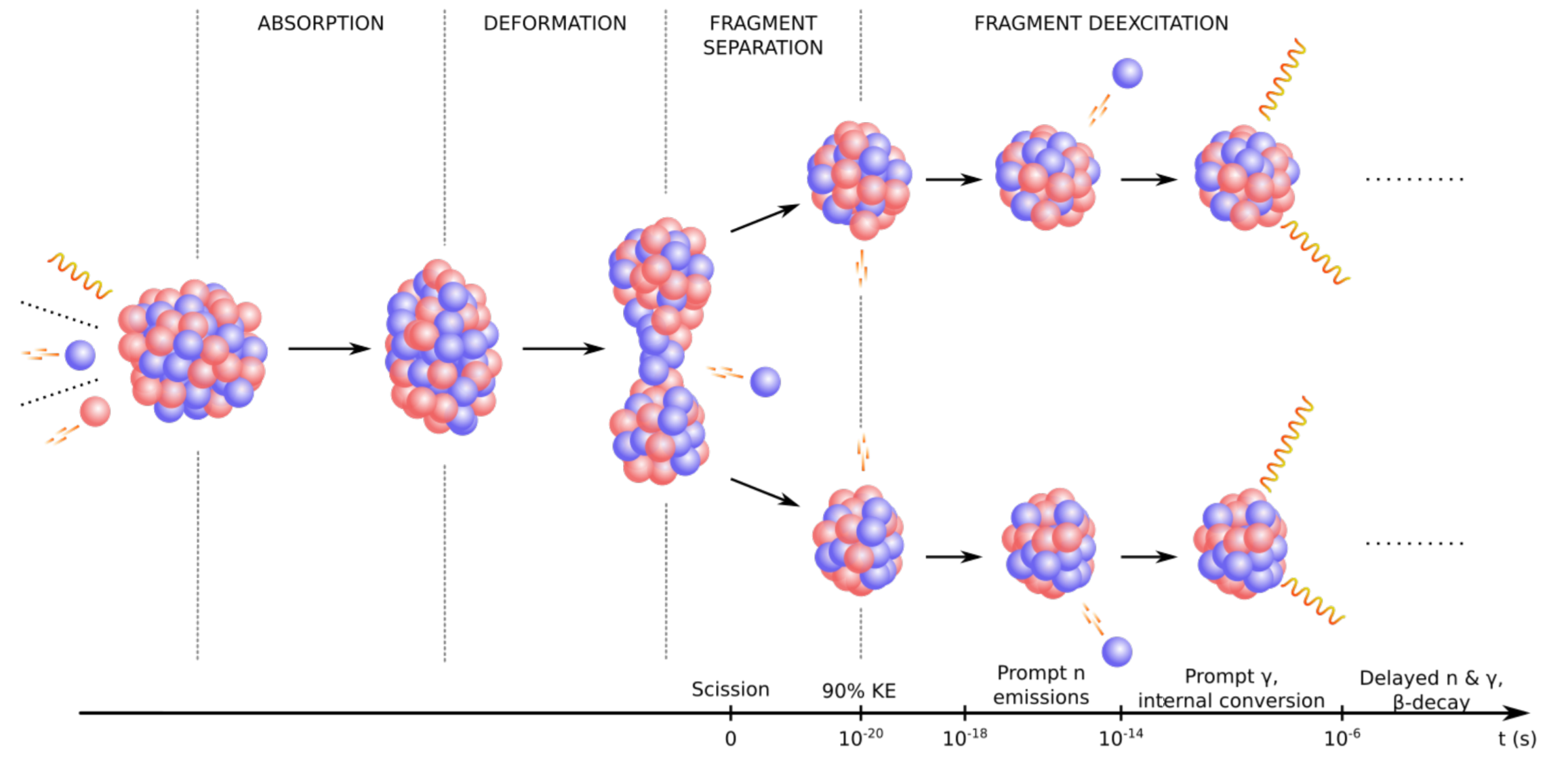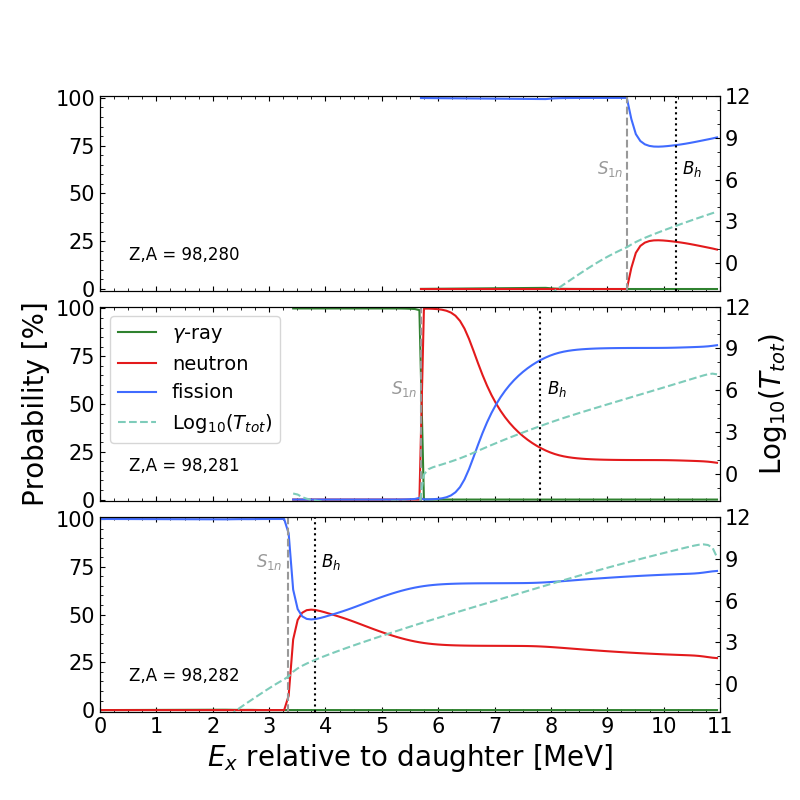The role of nuclear fission in the nucleosynthesis of the rapid neutron capture process

LA-UR-19-22694
Matthew Mumpower
LBNL Theory Seminar
Wednesday April 3$^{rd}$ 2019

FIRE Collaboration
Fission In R-process Elements
What is the site of heavy element formation?
The answer to this question requires

Knowledge of astrophysical conditions (variations in current simulations)
Knowledge of nuclear physics inputs (1000's of unknown species / properties)
(Both are needed to model the nucleosynthesis)
And precise observations!
In other words, the solution is quite difficult...
Schematic of a kilonova
Two component model: wind & dynamical eject

Red emission: late (weeks); lanthanide dominated
blue emission: early (days); UV dominated
Nuclear physics as the language of the $r$-process
1st order: masses, $\beta$-decay rates, capture rates & fission

What do we know?
The chart of nuclides

What do we know?
All half-lives

What do we know?
Recently measured beta-decay half-lives

What do we know?
Recently measured beta-decay half-lives

What do we know?
Nuclear masses

What do we know?
Neutron capture rates

What do we know?
As of today, to varying degrees of accuracy

Much will be measured at FRIB
But fission studies will remain relatively inaccessible

∴ Fission theory is critical find any sort of "smoking gun" of heavy element production
Nuclear fission in a nutshell

Influence on the $r$-process:
Fission rates and branching determine re-cycling (robustness)
Fragment yields place material at lower mass number; barriers determine hot spots
Large Q-value ⇒ impacts thermalization and therefore possibly observations
Responsible for what is left in the heavy mass region when nucleosynthesis is complete ⇒ "smoking gun"
Estimated Barrier Heights

FRLDM Barrier heights
Low barrier ↦ fission ⇑
$r$-process hot spots follow low barriers
Neutron-induced fission

Toshihiko's CoH statistical Hauser-Feshbach
Barrier heights Möller (2015) / FRDM2012 masses
Large region that will fission cycle $r$-process
Modeling
$\beta$-delayed fission ($\beta$df)
Modeling $\beta$ -delayed fission

We have a model to describe nuclear de-excitation called QRPA+HF
We have recently extended the our QRPA+HF model to describe $\beta$-delayed fission ($\beta$df)
Barrier heights from Möller et al. PRC 91 024310 (2015)
Multi-chance $\beta$ df

Near the dripline $Q_{beta}$ ⇡ $S_{n}$ ⇣
Multi-chance $\beta$df: each daughter may fission
New fission channel to consider for $r$-process calculations
The yields in this decay mode are a convolution of many fission yields!
($n$,$\gamma$,$f$) competition

Fission can successfully compete with $\gamma$-rays and neutrons
Particle spectra also produced which are of interest for observations
Cumulative $\beta$ df probability

$\beta$df occupies a large amount of real estate in the NZ-plane
Multi-chance $\beta$df outlined in black
Impact on final abundances

Network calculation of tidal ejecta from a neutron star merger (FRDM2012)
$\beta$df can shape the final pattern near the $A=130$ peak
This is because of a relatively long fission timescale
Conclusion ⇒ we need a good description of fission yields to understand abundances near $A\sim130$.
A second consequence of $\beta$df

Network calculation of tidal ejecta from a neutron star merger (FRDM2012)
$\beta$df alone prevents the production of superheavy elements in nature
Long-lived actinides

With careful fission treatments: if actinides are produced, they are usually overproduced versus lanthanides
A sufficient amount of dilution with ligher $r$-process material is required to match the solar isotopic residuals
∴ Fission theory has implications for galactic chemical evolution, etc.
Digging deeper...

Is there any possible precursor to show that actinide nucleosynthesis has occurred in an event?... Maybe!
The spontaneous fission of $^{254}$Cf is a primary contributor to nuclear heating at late-time epochs
The $T_{1/2}\sim 60$ days but yield distribution is not well constrained
Observational Impact of Californium


Both near- and middle- IR are impacted by the presence of $^{254}$Cf
Late-time epoch brightness can be used as a proxy for actinide nucleosynthesis
Future JWST will be detectable out to 250 days with the presence of $^{254}$Cf
This also has implications for merger morphology...
Fission yields
Where we're going...
Calculated yield (Californium)

FRLDM yields


▣ Experiment ▣ Theory
FRLDM fragment yields have remarkable agreement with known data
Over a range of experiments, evaluations and nuclei!
Special thanks to
My collaborators
A. Aprahamian, J. Barnes, B. Côté, J. Clark, C. Fryer, E. Holmbeck, P. Jaffke, T. Kawano, O. Korobkin, S. Liddick, G. C. McLaughlin, J. Miller, P. Möller, R. Orford, J. Randrup, G. Savard, A. Sierk, N. Schunck, T. Sprouse, A. Spyrou, I. Stetcu, R. Surman, P. Talou, N. Vassh, M. Verriere, R. Vogt, Y. Zhu
& many more...
▣ Students ▣ Postdocs ▣ FIRE ▣ LANL
Summary
The $r$-process relies on fission in many ways:
Re-cycling material ▴ Actinide production ▴ Late-time observations
FRIB and other facilities will make a lot of measurements, but fission studies remain relatively inaccessible
Fission theory is crucial to understanding the formation of the heaviest elements (and $A\sim130$)
The FIRE Collaboration will soon provide a suite of new fission properties for the community:
Rates • Branchings • Yields • Q-values • Spectra
Results / Data / Papers @ MatthewMumpower.com
Extra Slides
How we calculate fission yields

We use a discrete random walk over a potential energy surface
This assumes strong disspative dynamics
The ensemble of such random walks produces the fission yield